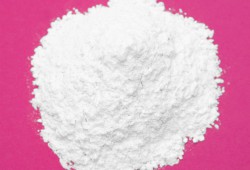Keeping warm with silica aerogel
Recent developments in materials science and nanotechnology have enabled the development of novel methods for thermal insulation. Aerogels are nanomaterials that are becoming more prominent materials for insulation in many applications, from houses and commercial buildings to space exploration missions. Despite their unique physical properties, aerogel popularity has been hindered by high production costs. With EU funding of project Quartzene(opens in new window), Svenska Aerogel has developed a patented process for the manufacture of an aerogel-type material called Quartzene®. The new micrometre-sized material can be marketed at a 50 - 60 % lower cost than all other aerogels. “Svenska Aerogel’s new patented methods will allow for the first time aerogel insulation to be developed for mass-market applications such as buildings, coatings and disposable food containers,” notes Svenska Aerogel’s founder and Head of R&D Prof. Christer Sjöström. Barriers to becoming a mainstream material Aerogels are amongst the least dense solids in existence, yet considering their weight, they are amazingly strong and one of the best insulators ever known. However, despite their list of outstanding properties as a result of pores and interfaces in their structure, traditional aerogels have so far been kept out of many practical applications. A major factor is the high production costs linked to the complex drying needed to create the aerogel using conventional drying techniques. In particular, the traditional silica aerogel is manufactured though the sol-gel method, which involves the synthesis of a porous silica network in a wet process. Subsequent drying must be performed under supercritical conditions for the solvent used to avoid shrinkage or collapse of the solid structure. Traditional drying techniques involved the use of relatively high pressures that eventually cause the material to either shrink or have a higher density than desired. The drying process of Quartzene® is performed under ambient pressure and low temperature increases. Its production is therefore considerably less expensive than traditional aerogels produced by supercritical drying. “The ambient pressure drying process used breaks solid materials into smaller pieces by grinding. The high air velocity and the small particles help make the drying process quick and energy efficient,” explains Prof. Sjöström. As he further notes, “Aside from lowering production costs, the novel drying process can reuse waste heat at above ambient temperatures. Waste heat recovery and reuse can improve energy efficiency by up to 90 %.” The end-product following this drying procedure is a fine-grained micron-sized powder, yet larger sizes can also be produced by applying various granulation techniques. Owing to its customised nano-porosity, ultra-low density and the fact that the only waste product is water and salt, Quartzene® can be used in a vast array of applications. Lightweight concrete for energy-efficient buildings As a granular and powdered aerogel-type material, Quartzene® can transfer its beneficial properties to building materials such as foamed concrete. “Buildings are now responsible for approximately 40 % of energy consumption and 36 % of CO2 emissions in the EU. The addition of thermal insulation materials such as Quartzene® to existing buildings can lower CO2 emissions from heating and cooling by more than 40 %,” notes Prof. Sjöström. Compared to existing insulation materials, Aercrete’s new lightweight concrete produced by mixing silica aerogel Quartzene® enhanced thermal and fire-resistant performance – properties that are highly needed for such applications. Extensive list of applications Project partners have also tested the ability of disposable food containers composed by Quartzene® to inhibit heat transfer. The material proved to keep food isolated from the environment while maintaining the required temperature. Kolon Glotech, another project partner, used and evaluated Quartzene® to improve surface treatments and coatings for the automotive industry. Aside from generating optimised surfaces and regulating surface temperature, research was geared towards studying new acoustic damping products. Quartzene® combines high porosity, very low density and thermal conductivity at a low price. Svenska Aerogel’s energy- and cost-efficient production process makes this material unique compared to conventional aerogels.







